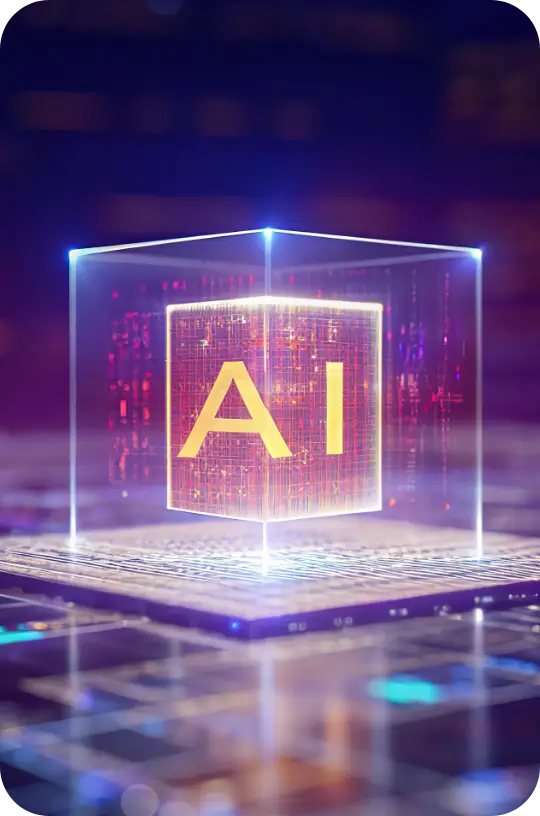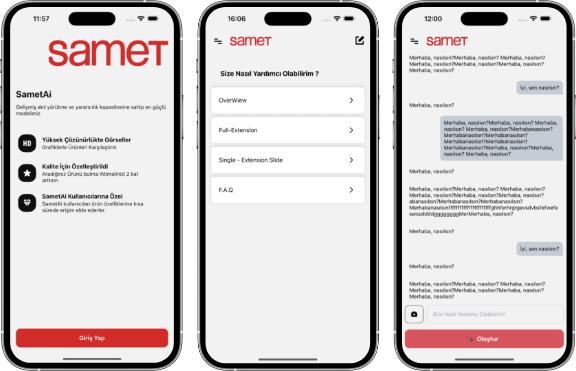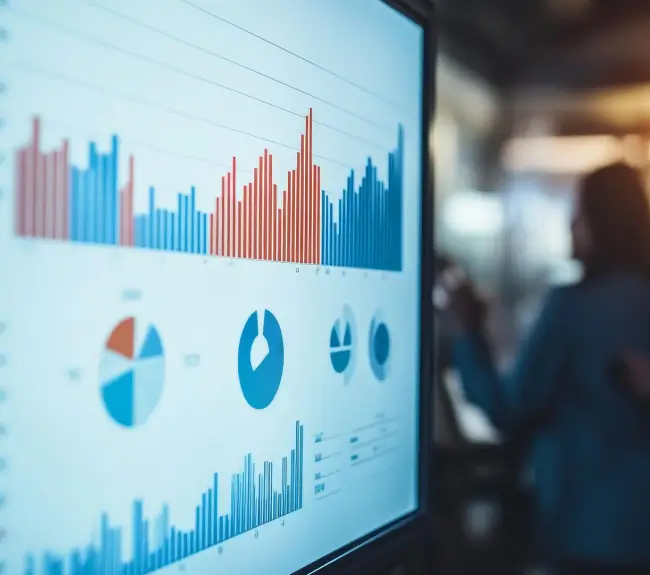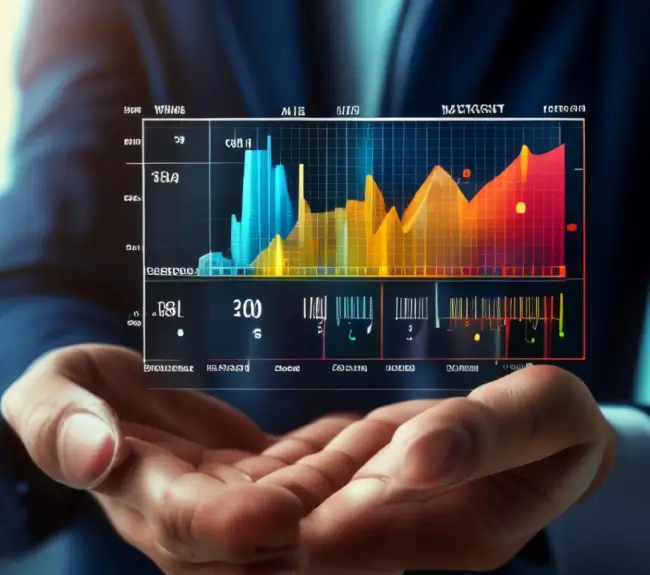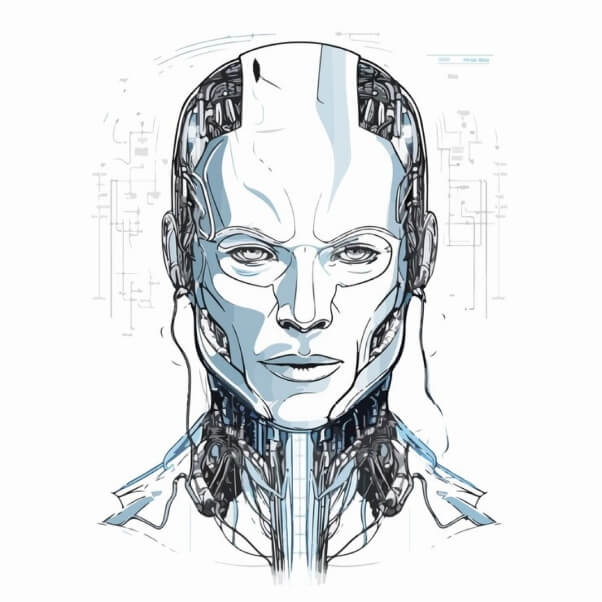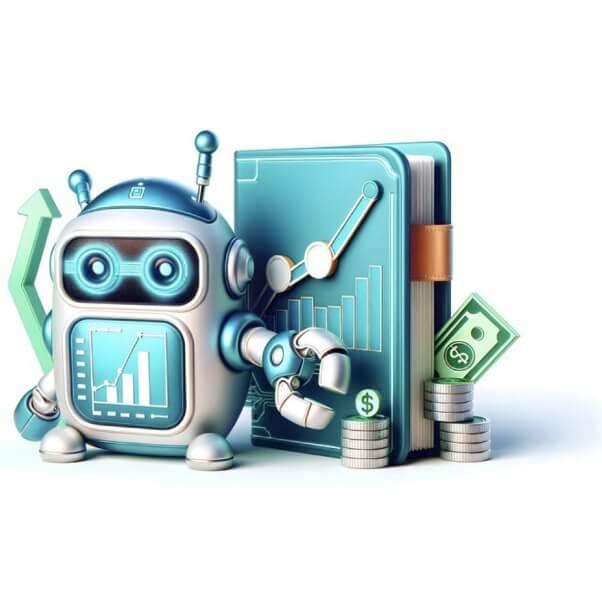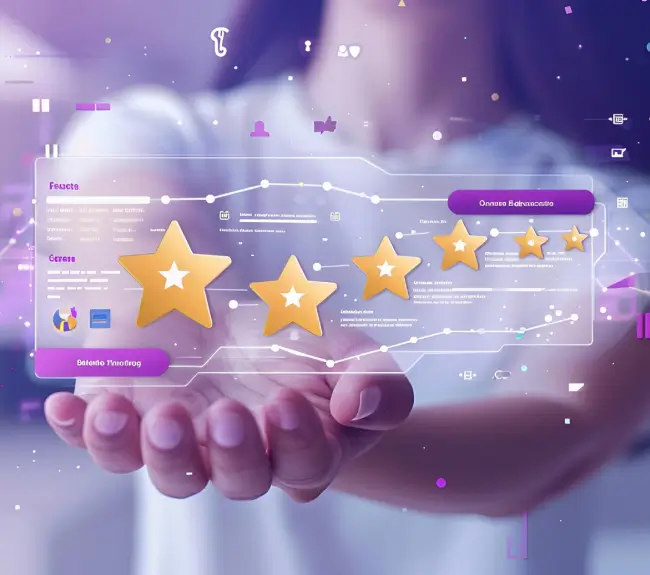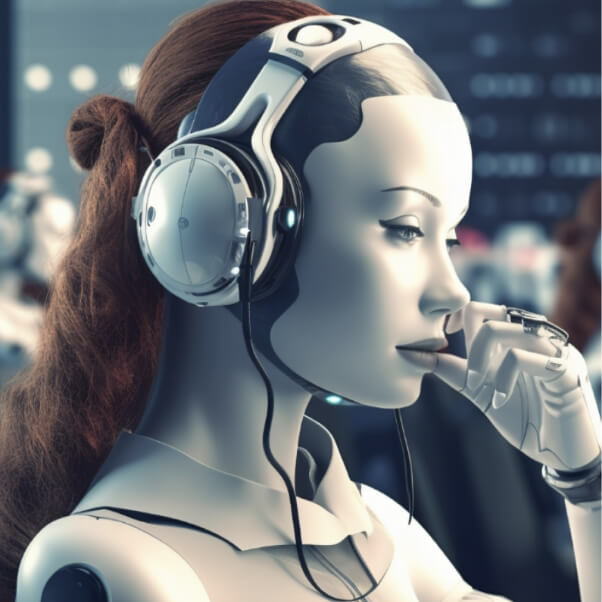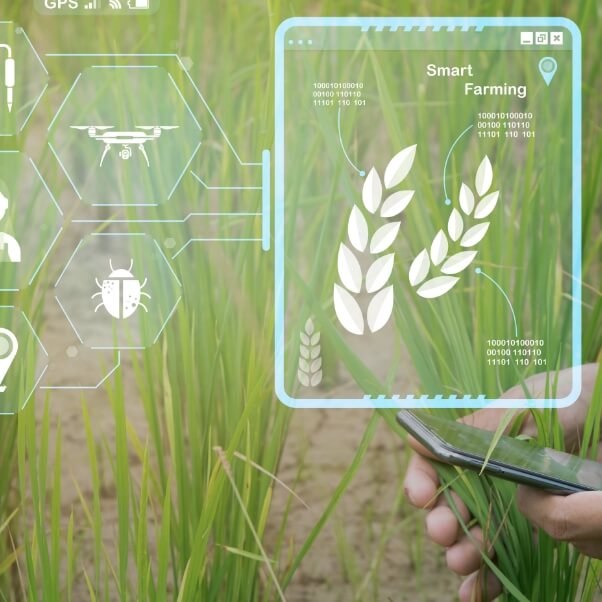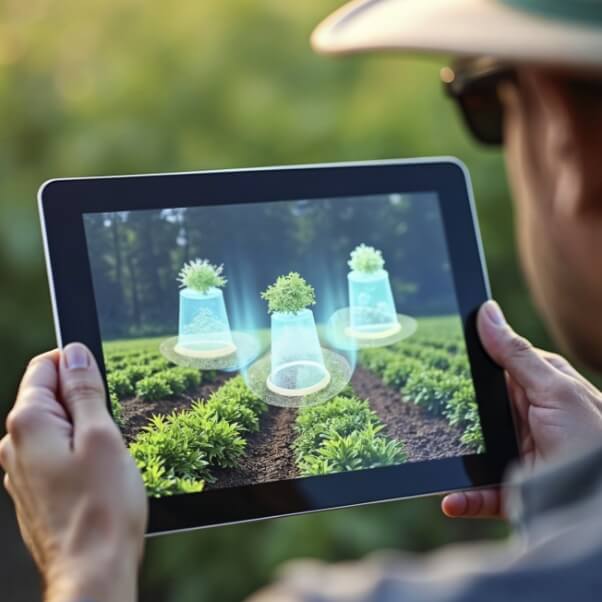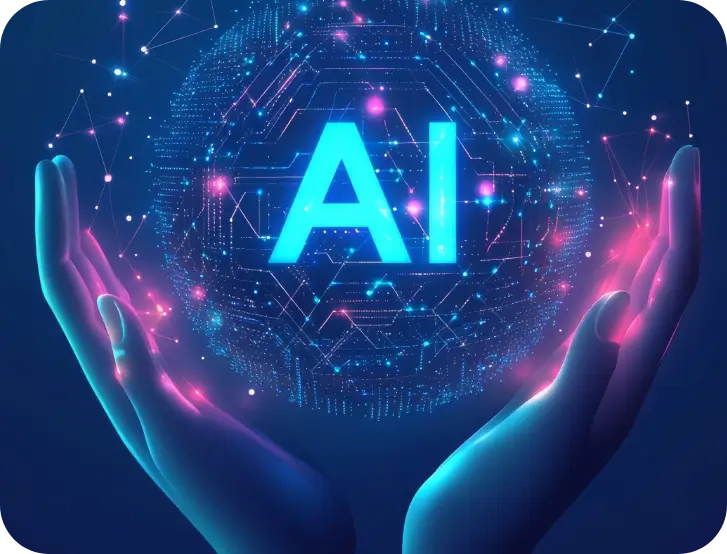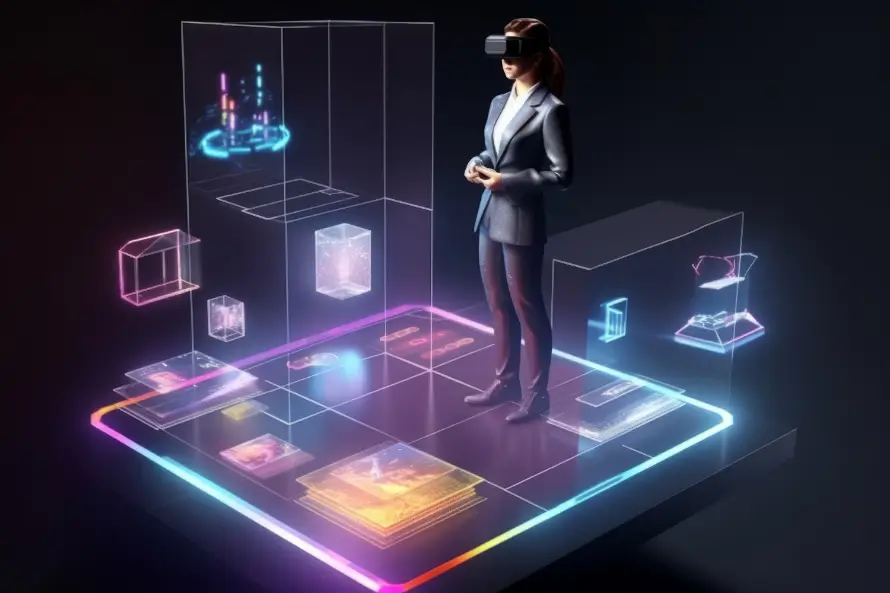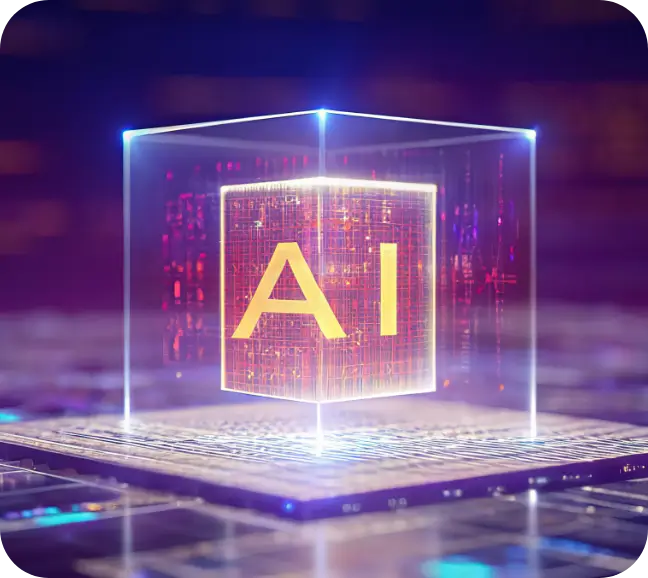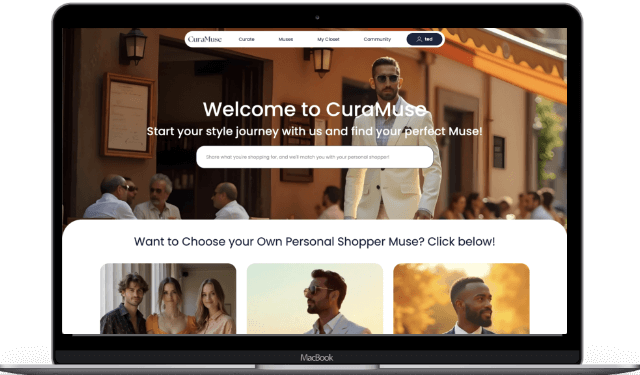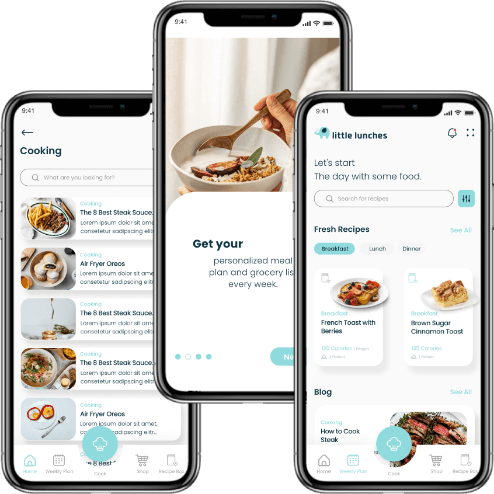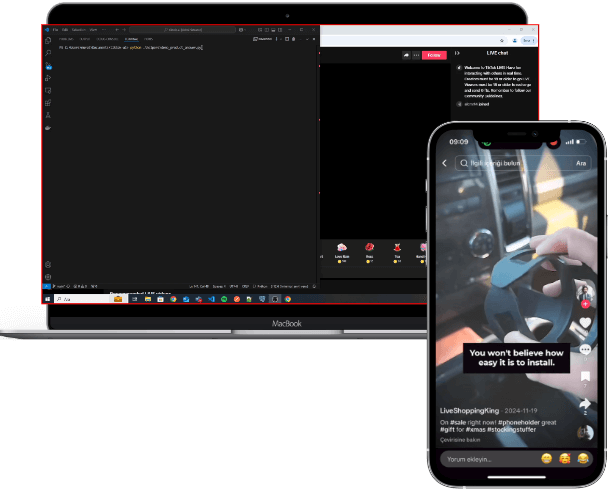4A Labs
AI Solutions
Turn Complexity into Intelligence
Most enterprises automate tasks.
The best ones orchestrate intelligence.
Smarter Workflows,
Not Just Faster Ones
Agentic AI Workflow Management means your business logic starts to reason like a human expert. Each AI agent perceives its environment, makes context-aware decisions, and acts with precision.
• Move from static scripts to dynamic, self-optimizing workflows
• Connect AI agents directly into your ERP, CRM, or data pipelines
• Gain transparency and trust through full auditability and control
The Power of Multi-Agent Orchestration
Enterprises run on coordination—between departments, systems, and now agents. Our multi-agent architectures create ecosystems where specialized agents (finance, ops, compliance, analytics) communicate through a central orchestrator that ensures alignment, context, and governance.
Your AI network becomes a living digital workforce—autonomous, collaborative, and accountable.
From RAG to GraphRAG
to Agentic RAG
Knowledge drives performance. But data is only useful if AI understands context. We design layered RAG frameworks—from simple retrieval setups to GraphRAG and Agentic RAG—so your enterprise can query its knowledge base with confidence, accuracy, and explainability.
Imagine decision-support that connects facts like a graph, reasons like an analyst, and responds like a team lead.
MCP (Model Context Protocol)
The Universal Connector
Modern AI is no longer a black box; it’s an ecosystem. MCP (Model Context Protocol) is the open standard that lets your AI systems and LLMs plug into external tools and data sources through a single language.
Think of it as the “API of AI integration” — a universal connector that lets your agents send emails, query databases, and collaborate across applications without custom code. We implement enterprise-grade MCP servers and clients to connect your AI ecosystem securely, governed by audit policies and real-time observability.
A2A Protocol
When AI Agents Talk to Each Other
Intelligence scales through communication. Our Agent-to-Agent (A2A) Protocol defines how your agents coordinate, delegate, and share context safely across systems. It’s how your AI ecosystem stays coherent as it grows — like a well-run organization where every team knows what others are doing.
The 4A Labs Approach
We don’t sell AI projects — we engineer AI partners for your business. Transparent. Scalable. Accountable. Our systems help your teams focus on vision while AI handles the execution.
Build AI that thinks, collaborates, and delivers. Let’s start your enterprise transformation today.
Our Enterprise Level AI Projects
Discover CarrefourSa: A Fresh AI Experience, Redefined.
We have added a digital food, health and food assistant to CarrefourSA’s mobile application. The application, which includes features such as recipes, food recognition from images, listing the ingredients of the meal, sorting the necessary ingredients and adding them to the basket, calorie calculation, meal planning, and allergy tracking, is added to the application as a digital assistant via an LLM-based AI model. We will see it in the CarrefourSA application in the markets very soon.
To develop this platform, we scanned approximately 1.2 million food images and contents and ran approximately 1.8 million food and ingredient data on ML models and algorithms.
Samet Product Information Mobile Application
We are developing a mobile application that will provide the sales team with fast and accurate access to detailed product information. The application extracts, categorizes and processes product data (from PDF documents). Thus, it will provide instant answers to complex product-related problems. Core functions include product comparisons, a natural language processing (NLP) based question-answer system and the ability to display rich answers in the form of text, images, links and data tables. The project is being prepared in multilingual formats, including English and Turkish.
Demand Forecasting
Project Overview
• The goal is to forecast product demand using historical and external data.
• Helps improve stock planning, reduce costs, and increase customer satisfaction.
Data Sources
• Sales history, campaign data, holidays, and weather information.
• Data collected on a daily and store-based level.
Approach
• Time series forecasting techniques were applied.
• Both traditional and AI-based models were tested and compared.
• External factors like weather and promotions were included in the analysis.
Model Selection
• Several models were evaluated to find the most accurate one.
• The best-performing model was selected based on past prediction accuracy.
Evaluation
• Forecasts were compared with actual sales.
• Accuracy rate of over 80% was achieved.
• Visual results were used to support interpretation.
Key Benefits
• Prevents overstock and stockouts.
• Supports decision-making for campaigns and supply planning.
• Increases operational efficiency and customer satisfaction.
Challenges Faced
• Inconsistent data and sudden demand spikes.
• Large number of products and stores to manage.
• These were addressed through data cleaning and grouping strategies.
Next Steps
• Integration with internal systems for automated planning.
• Continuous model improvement with new data and feedback.
• Expansion to new product categories and stores.
Store Manager Assistant
Project Overview
• A smart assistant (chatbot) was developed to support store managers in daily operations.
• It provides quick access to store-specific data and answers to frequently asked questions.
Purpose
• To save time for store managers by automating routine queries.
• To help them make faster and more informed decisions.
Main Features
• Answers questions about daily sales, stock status, returns, and performance.
• Supports natural language queries (e.g., “What were my sales yesterday?”).
• Can filter results by product, date, or store section.
How It Works
• Connected to internal systems to fetch real-time and historical data.
• Designed to understand simple, everyday language.
• If a store name is not mentioned, it assumes the user’s own store.
Key Benefits
• Reduces time spent on checking reports manually.
• Increases operational efficiency and responsiveness.
• Makes data more accessible and actionable for store staff.
User Feedback
• Positive response from store managers regarding ease of use.
• Helped reduce dependency on support teams for routine information.
Next Steps
• Adding voice interaction and mobile access.
• Expanding to cover HR, customer service, and logistics topics.
HR Assistant
Project Overview
• A virtual HR assistant was developed to support employees and managers with quick access to HR information.
• It simplifies HR processes by answering common questions and providing instant guidance.
Purpose
• To reduce the workload on HR teams by automating repetitive queries.
• To improve employee experience through faster and more transparent communication.
Main Features
• Responds to questions about leave balances, payroll dates, shift schedules, and HR policies.
• Guides employees on how to apply for leave, report an issue, or update personal information.
• Personalized responses based on user role and department.
How It Works
• Integrated with internal HR systems to access real-time data.
• Understands natural language and adapts to company-specific terminology.
Ensures data privacy and access control by verifying user identity.
Key Benefits
• Reduces time spent on checking reports manually.
• Increases operational efficiency and responsiveness.
Makes data more accessible and actionable for store staff.
User Feedback
• Positive response from store managers regarding ease of use.
• Helped reduce dependency on support teams for routine information.
Next Steps
• Adding voice interaction and mobile access.
• Expanding to cover HR, customer service, and logistics topics.
Finance Assistant
Project Overview
• A financial assistant chatbot was developed to support finance teams with instant access to key financial data.
• It helps users get answers to finance-related questions quickly and accurately.
Purpose
• To improve decision-making by making financial data more accessible.
• To reduce time spent searching through reports or asking colleagues.
Main Features
• Answers questions about daily revenue, cost breakdowns, budget vs. actual comparisons, and financial KPIs.
• Supports queries by store, product category, time period, and channel.
• Provides visual summaries and formatted tables when needed.
How It Works
• Integrated with financial databases and reporting systems.
• Understands natural language queries (e.g., “What was last month’s revenue by region?”).
• Defaults to a specific store or time range if not specified by the user.
Key Benefits
• Speeds up access to critical financial insights.
• Reduces dependency on analysts for basic reporting needs.
• Enables better monitoring of financial performance across the organization.
User Feedback
• Finance staff and managers found it intuitive and time-saving.
• Helped reduce email traffic and manual report requests.
Next Steps
• Integration with planning and forecasting tools.
• Enabling alerts for unusual financial patterns or threshold breaches.
Customer Feedback Analysis
Project Overview
• A sentiment analysis system was developed to analyze customer feedback from multiple channels.
• The goal is to better understand customer satisfaction and identify common issues.
Purpose
• To collect and analyze comments from platforms like Google Play, App Store, Şikayetvar, and internal systems.
• To help departments take action based on real customer insights.
Main Features
• Automatically classifies comments as positive, negative, or neutral.
• Detects key topics such as delivery, pricing, in-store service, and product quality.
• Provides percentage breakdowns for each topic and sentiment category.
How It Works
• Uses AI to process large volumes of text and identify patterns.
• Groups feedback by source, store, date, and subject.
• Offers filtering and visualization features through a user-friendly dashboard.
Key Benefits
• Helps identify the most common customer complaints and compliments.
• Supports faster and more targeted responses to customer needs.
• Enhances customer experience by turning feedback into actionable insights.
User Feedback
• Widely used by marketing, operations, and customer experience teams.
• Helped reduce response time to negative feedback and improved service planning.
Next Steps
• Real-time monitoring and alerts for sudden spikes in complaints.
• Expanding the system to analyze audio feedback from call centers.
Call Center Assistant
Project Overview
• An AI-powered support system was developed to assist call center agents during and after customer interactions.
• It helps improve service quality, reduce call handling time, and extract valuable insights from conversations.
Purpose
• To automate conversation summaries, detect key topics, and analyze sentiment.
• To support agents with relevant information in real time and improve post-call reporting.
Main Features
• Converts customer-agent calls into text using speech-to-text technology.
• Summarizes conversations and identifies main issues, customer sentiment, and action items.
• Highlights frequently mentioned keywords and topics for analysis.
How It Works
• Uses natural language processing to understand and analyze audio conversations.
• Differentiates between the agent and the customer in the transcript.
• Provides visual summaries and insights through a user interface.
Key Benefits
• Speeds up post-call documentation and follow-up actions.
• Helps managers monitor quality and detect recurring problems.
• Enables faster training and coaching through real case insights.
User Feedback
• Agents reported reduced workload and faster wrap-up times.
• Supervisors gained better visibility into customer pain points.
Next Steps
• Enable real-time suggestions during calls.
• Integrate with CRM and ticketing systems for seamless action tracking.
Computer Vision Based Quality Control
Project Overview
• A computer vision system was developed to perform automated quality control by analyzing product images.
• It compares physical products with their digital designs to detect production defects.
Purpose
• To minimize human error in visual inspections.
• To ensure product consistency and reduce defect rates.
Main Features
• Compares images of physical items with reference designs using AI.
• Detects defects such as misalignment, missing parts, color differences, or shape inconsistencies.
• Highlights faulty areas automatically for further review.
How It Works
• Uses computer vision and deep learning to analyze images taken during or after production.
• Flags deviations from expected standards based on predefined tolerance levels.
• Allows operators to review and confirm the results through an interface.
Key Benefits
• Increases inspection speed and accuracy.
• Reduces costs associated with faulty products and returns.
• Provides consistent, objective evaluations regardless of human fatigue or bias.
User Feedback
• Quality control teams reported increased efficiency and confidence in inspection processes.
• Helped reduce rework and waste in production.
Next Steps
• Integrate with production lines for real-time inspection.
Expand the model to support multiple product
types and lighting conditions.
Computer Vision-Based Ripeness Level&Potential Disease Detection
Project Overview
• An AI-based vision system was developed to detect the ripeness level and potential diseases of agricultural products using camera images.
• It helps producers monitor crop health and optimize harvest timing.
Purpose
• To provide early detection of plant diseases and improve harvest quality.
• To reduce manual labor and human subjectivity in assessing crop conditions.
Main Features
• Classifies fruits or vegetables based on ripeness levels (e.g., unripe, ready, overripe).
• Identifies visual symptoms of diseases like discoloration, mold, or surface damage.
• Provides alerts and visual indicators through a dashboard.
How It Works
• Uses cameras placed in the field or greenhouse to capture real-time images.
• Applies deep learning models trained on labeled image datasets.
• Analyzes color, texture, and shape to determine maturity and health status.
Key Benefits
• Supports timely harvesting decisions, leading to better product quality.
• Helps prevent the spread of disease through early intervention.
• Reduces dependency on expert field inspections.
User Feedback
• Farmers and agronomists found it useful for daily field monitoring.
• Improved planning for harvest and disease treatment.
Next Steps
• Integrate with drone and mobile camera systems for large-scale monitoring.
• Add prediction capabilities for disease risk based on environmental data.
Big Data Platform
Project Overview
• A robust Big Data platform was developed to manage and analyze large-scale data from various sources within the organization.
• The platform is designed to handle complex data processing, storage, and real-time analytics.
Purpose
• To enable data-driven decision-making by providing fast and reliable access to large datasets.
• To support advanced analytics and machine learning applications at scale.
Main Features
• Centralized data storage and processing across multiple sources (e.g., sales, inventory, customer feedback).
• Real-time data ingestion and batch processing capabilities.
• Seamless integration with analytical tools and AI/ML models.
How It Works
• Uses Hadoop and other distributed systems for efficient storage and parallel data processing.
• Supports ETL (Extract, Transform, Load) pipelines to clean, format, and organize raw data.
• Scalable infrastructure to accommodate growing data volumes.
Key Benefits
• Enables faster insights and reporting across departments.
• Reduces data silos and promotes cross-functional collaboration.
• Provides a scalable foundation for future growth and data expansion.
User Feedback
• Teams reported faster data retrieval times and more efficient data handling.
• Helped improve decision-making with real-time access to relevant data.
Next Steps
• Implement advanced analytics and AI capabilities to predict trends and patterns.
• Expand the platform to include additional data sources and improve data visualization.
Agentic AI as
Your Unfair Advantage
Your business moves fast. Your AI should keep up. We design adaptive agents that understand your data, your customers, and your goals — automating what slows you down and amplifying what drives results.
• Build once, scale endlessly with modular AI backbones
• Prototype MVPs with ready-to-deploy agentic frameworks
• Automate content, ops, and analytics through context-aware reasoning
Multi-Agent Orchestration
for Lean Teams
Imagine a tiny team that works like a hundred. We build multi-agent orchestration layers that let AI handle data ingestion, recommendations, support, and insight generation — all coordinated by a central brain that keeps everything in sync.
Each agent is specialized, but together they run your operations like a symphony.
RAGs That Grow with You
Data is your fuel. Context is your engine. Our custom RAG architectures help you turn raw information into real-time intelligence.
From simple Naïve RAG setups to GraphRAG and Agentic RAG systems, we build retrieval engines that understand relationships, not just keywords — so your AI answers smarter as your startup grows.
MCP (Model Context Protocol)
The Universal Connector
Integrations can make or break a startup’s speed. MCP (Model Context Protocol) standardizes how your AI connects to tools and data — from emails to databases to payment APIs.
It’s like a plug-and-play layer for your AI stack — build once, reuse everywhere. No custom connectors, no integration chaos. We wrap your core stack (DB, auth, email, storage, payments) as MCP servers and launch agentic MVPs that can scale securely and cost-efficiently from day one.
A2A Protocol
When Your Agents Collaborate
As your startup grows, you’ll add new AI components — analytics, recommendation, compliance. Our A2A Protocol ensures these agents talk to each other smoothly, share context instantly, and work as a cohesive network rather than isolated tools.
Your AI doesn’t just automate tasks — it builds relationships.
The 4A Labs Promise
We combine startup velocity with enterprise-grade AI architecture. You get clarity, speed, and a partner that understands how to turn AI into traction.
Build smarter. Scale faster. Stay ahead. Let’s architect your AI backbone together.
Our Startup AI Projects
AI-Powered Personal Shopping Assistant
CuraMuse is your personal shopping expert, combining artificial intelligence and human touch. It analyzes your interests, shopping habits and more to provide personalized recommendations based on your or someone special’s unique preferences. As your virtual shopping assistant, CuraMuse carefully considers every detail and prepares recommendations that fit your lifestyle.
ML and LLM-based Infrastructure
The cloud environments of the websites of Korean makeup brands in Türkiye are controlled by an ML and LLM-based infrastructure as equivalent in Superonline data centers. All transactions are processed on the ML model with logs and metrics received from Prometheus, Datadog and NewRelic, and the metrics are evaluated and transmitted to the relevant personnel as summaries that the IT personnel can understand.
Meal Planning Platform
Little Lunches, a healthy food and meal planning app for kids and families, is the most widely used digital health and food assistant in the United States. ML models prepared according to 780 thousand different American and South American food cultures and content are presented to users as an AI chatbot experience via an LLM.
Social AI
It is an interaction bot that can connect to live broadcasts on social media, follow broadcast streams, read comments, and provide feedback as comments. The AI robot can also work as a moderator.
Let’s Build
Something
Intelligent
Together

